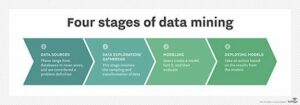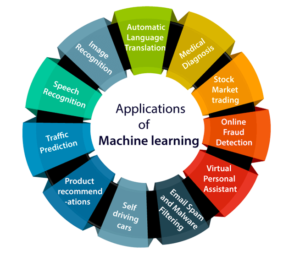Machine Learning vs Data Mining: Essential Differences
Many aspects of machine learning and data mining are interrelated. After all, without machine learning, some parts of data mining wouldn’t be possible.
Each tool shares core computer science concepts. However, data mining and machine learning have different use cases, execution requirements, and market presences.
This article defines data mining vs machine learning. Then, it examines the intricacies of each data science tool and the differences between them.
Need help selecting a company?
Based on your budget, timeline, and specifications we can help you build a shortlist of companies that perfectly matches your project needs. Get started by submitting your project details.
What Is Data Mining?
Data mining consists of gathering large amounts of data, identifying patterns, and establishing predictive models based on the patterns discovered. The resulting models can predict consumer behavior in the marketplace.
The process of data mining consists of four stages:
- Data sources: The team starts with an original, large data set that will undergo the data mining process. Much of this work begins within a database. For data mining to be legal, the data source must be publicly available or acquired with consent.
- Data gathering: The original data source is transformed and sampled by those conducting the data mining process. In this stage, they begin to determine existing patterns within the data.
- Modeling: The team builds a predictive model based on the patterns discovered in the data-gathering stage. The model is tested and evaluated on its performance.
- Deploying models: The team decides a path forward or performs an action based on what was discovered in the modeling stage.

Source: SeachSQLServer
Each stage is key to guiding a team by executing a data mining project. Data mining requires humans to interact with the extracted data, and the four stages of data mining give people a structured process to follow.
How Does Data Mining Work?
During data mining, specialists leverage a variety of industry best practices. This consists of different software tools and data mining techniques. These methodologies include the following:
- Anomaly detection
- Regression analysis
- Rule induction
- Choice modeling
- Association learning
- Clustering analysis
Depending on what the team wishes to execute, they will employ a data mining methodology to achieve their aims.
Unlike machine learning, which relies on fully established algorithms, data mining deals with big data. These methodologies are essential for turning huge data sets into predictive models.
What Is Machine Learning?
Machine learning is the process of training a machine to learn and recognize patterns using existing data.
Unlike data mining, machine learning does not require human intervention after the deployment of an algorithm. Machine learning allows parts of the data mining process to occur automatically, without manual work from a data science team.
The intuitive nature of machine learning is achieved through machine learning algorithms. These algorithms dictate the instructions the machine must follow to “learn” how to execute a desired task.
Data scientists use several types of algorithms to facilitate machine learning, including the following:
- Linear regression
- Logistic regression
- Decision tree
- SVM
- Random forest
These and other popular algorithms enable machine learning activity to occur.
What Is Machine Learning Used For?
Machine learning is becoming increasingly popular in the world of data science and development. Its numerous capabilities and impressive ability to learn and improve over time are enticing to innovators in the tech space.
Businesses are continuing to find new ways to use machine learning. Some of the most popular applications of machine learning are:
- Image recognition
- Language translation
- Speech recognition
- Fraud detection
- Traffic predictions

Source: Javatpoint
Of all the applications of machine learning, image recognition is the most widespread. Especially within the social media space, development teams leverage image detection to create filters with the ability to fit a user’s face.
Snapchat, a popular image-sharing mobile app platform, was a pioneer in developing fun filters that relied on image recognition.

Source: The U.S. Sun
The company has created filters that appear to age the user’s face, arrange cartoon designs around a face, and even warp a face into a 3D cartoon character while maintaining key facial features.
By learning to recognize the nuances of the human face through image recognition, machines can automatically apply interactive filters for consumers to enjoy on mobile apps such as Snapchat and Instagram.
Machine Learning vs Data Mining: Solving Different Problems
Development teams routinely use machine learning and data mining to tackle complex issues that require data science solutions. Each tool’s execution processes and applications vary significantly, requiring differing levels of oversight by human development teams.
However, both provide insights and improved accuracy that allow businesses to understand customers better and address their needs.
Need help selecting a company?
Based on your budget, timeline, and specifications we can help you build a shortlist of companies that perfectly matches your project needs. Get started by submitting your project details.